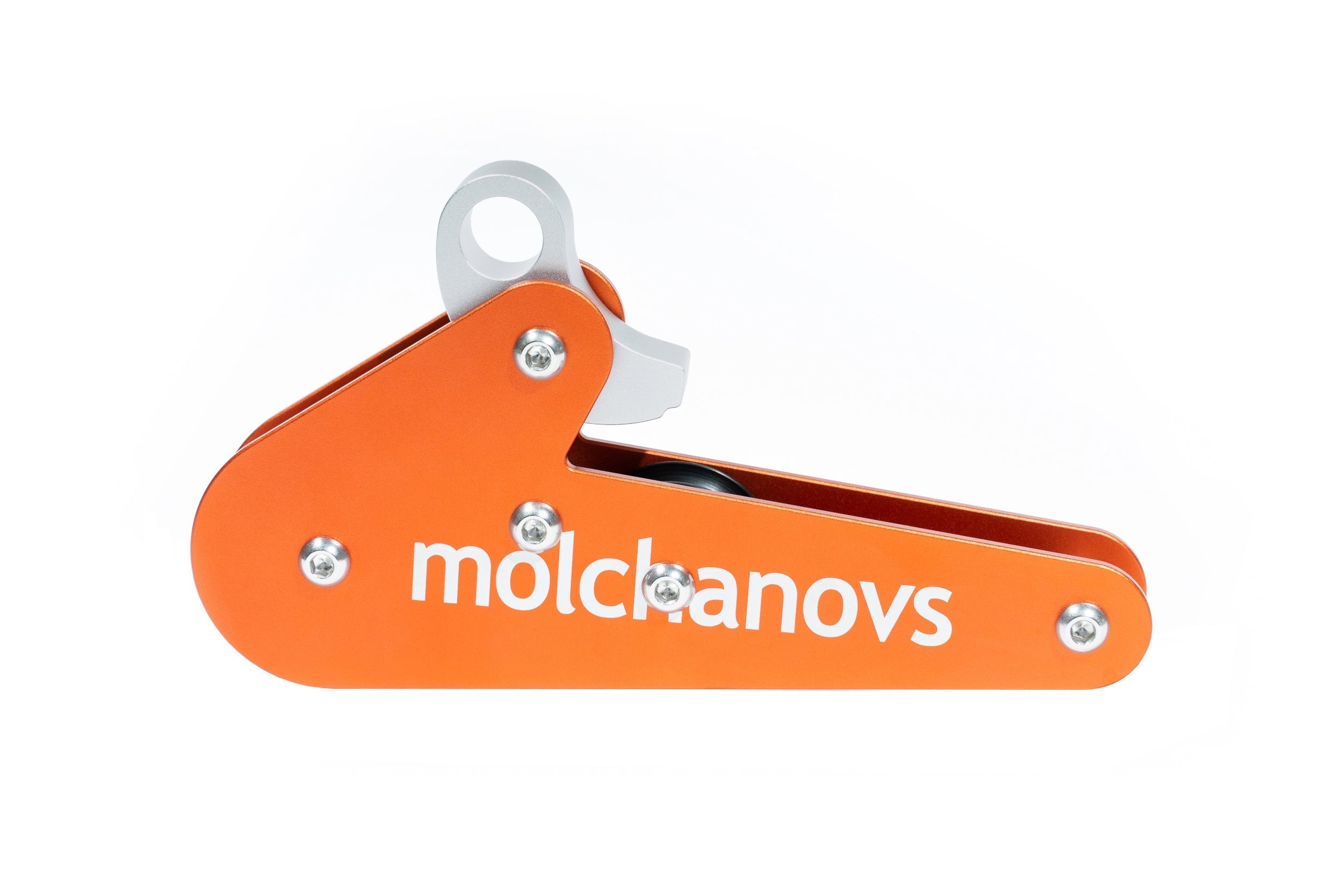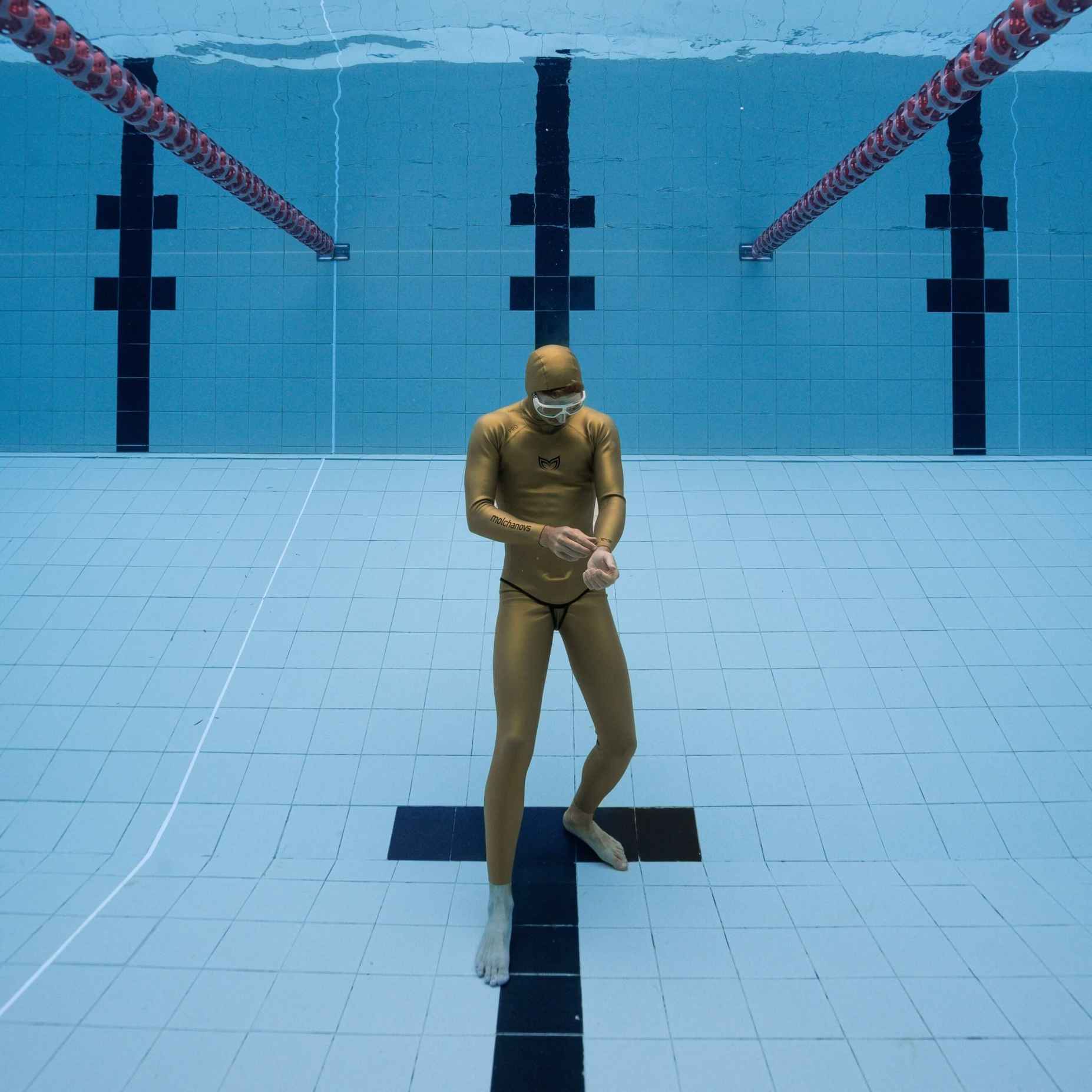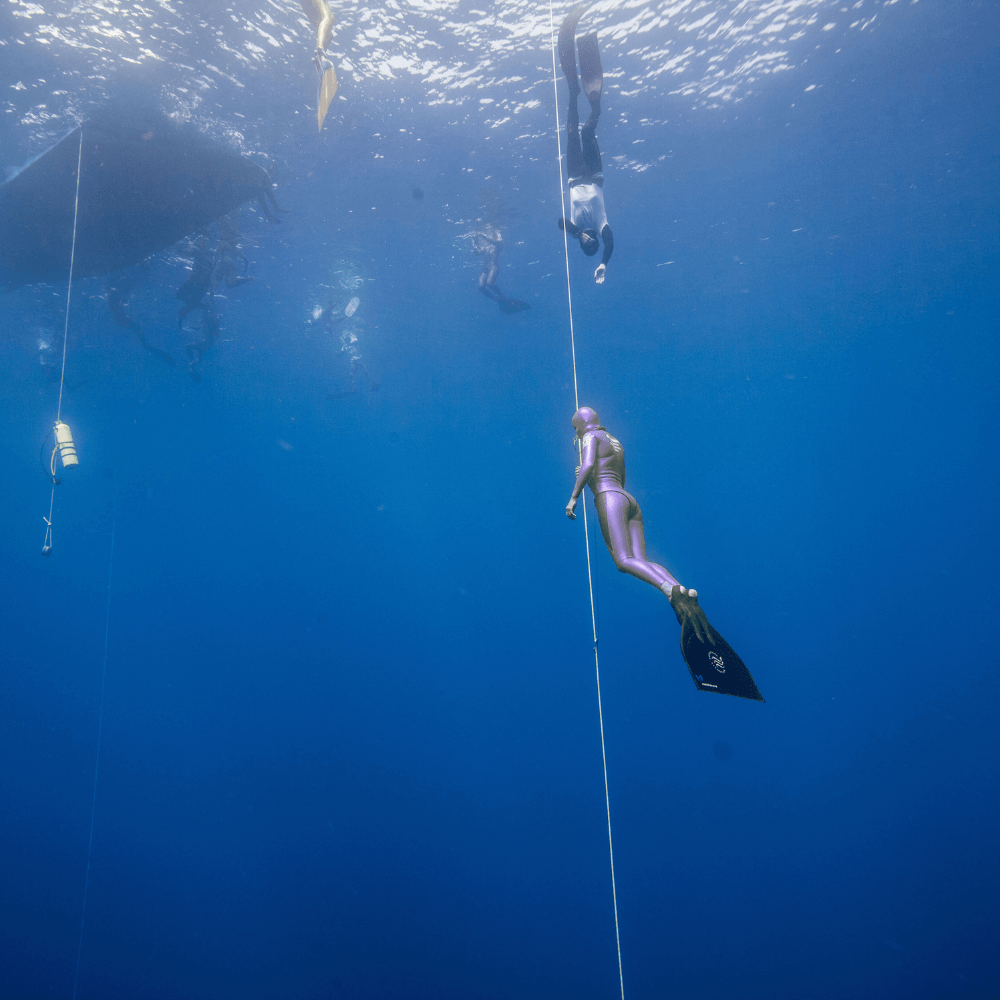The Pulley System: An Essential Freediving Tool

By Kristina Zvaritch
The days of manually pulling up the dive line at the end of a freediving session are far behind us.
What is a pulley system?
Pulley systems are still quite a new concept in freediving circles, but they are becoming more known as an essential addition to a freediving buoy/float setup, especially as freedivers begin to dive deeper. But first, what exactly is a pulley system?
A pulley is a collection of one or more wheels and a rope which transmit energy and motion, making it easier to lift heavy things. Freedivers use pulley systems primarily as a safety system, as they are extremely helpful in deep rescue scenarios with blacked out freedivers. Pulley systems also make it much easier to raise and lower bottom weights on a buoy.
Why are pulley systems so useful in freediving?
Ease of use
Without a pulley system, freedivers who want to raise or lower a heavy bottom weight (usually between 6-10kg/13-22lbs) would either need to jump on top of the buoy to pull up the weight or pull it up while finning upward in the water. Difficult conditions such as currents or waves can make it even more tiring to do so, and even dangerous in some situations.
With a pulley system, all a freediver has to do to lower a bottom weight is press/pull a lever to let the weight drop. To pull up a bottom weight, a freediver has to put their foot against the mounting point of the pulley system and pull the rope towards them, which takes a minimal amount of effort. Pulley systems allow freedivers to use their whole bodies when pulling up the rope, allows them to take breaks, and also lets them take turns, which saves them a lot of strength, especially after a demanding training session.
Safety
If a freediver is at depth and blacks out, or has trouble ascending, the first priority of their buddy is to get the freediver back to the surface. But if the freediver blacks out at a deep depth the buddy cannot reach, or in the case that the buddy has issues with equalization, the freediver in trouble must be pulled quickly back to the surface using the dive line. This can be exceptionally difficult to do without a pulley system, especially switching between two or more people if the buddy has help from other freedivers.
With the pulley system, the buddy can pull the freediver in trouble back to the surface at a much faster rate, with less effort, and with more convenience. It is also easier to switch between people pulling up the line since the pulley automatically locks the bottom weight into place if you let go of the dive line. The buddy can either pull the freediver all the way back to the surface, or another buddy can dive down and bring the freediver back up once the freediver is at a reachable depth. A freediver must wear a safety lanyard, such as the PRO Freediving Lanyard 2, in order for the pulley system to effectively bring them to the surface.
The Molchanovs A6061 Rope Pulley
Molchanovs pioneered the first freediving pulley system in 2016 and is currently on their fourth generation of pulley systems: the A6061 Rope Pulley. This classic pulley system uses a push lever to lower the line and allows for effortless use and faster handling. It is easy to operate and is designed to accommodate dive lines anywhere between 8-12mm. Distinguishing differences in this particular pulley system include the mechanics, lever design, and handle placement. The angle of the handle is strategically placed towards the buoy and is protected from being accidentally pushed down.
Setup
For pulley systems such as the A6061 Rope Pulley, you would need to have a marine-grade stainless steel or aluminum carabiners that are about 10cm (4in) long to attach your pulley system to the buoy. It is recommended to have two carabiners: one for the pulley system, and the other to attach the bottom weight to when swimming with the buoy.
Instructions:
The A6061 Rope Pulley must be used with a large carabiner, 100-120mm minimum (not included).
If you do not have a lanyard stopper already on the rope:
- Begin by locating the end of the rope where the bottom weight will attach.
- Pull the end of the rope under the metal pin (through the handle) and underneath the rope stopper (rope stopper should be in an open position*).
- Continue feeding the rope under the rope stopper and out through the other side.
- Begin by locating the end of the rope opposite of where the bottom weight will attach to.
- Push the end of the rope through the pulley system over the larger side with the wheel and underneath the rope stopper (rope stopper should be in an open position*).
- Pull the rope through and continue feeding it underneath the metal pin (through the handle).
*The open position of the rope stopper is illustrated below

When diving, it is recommended to take the remaining loose rope and secure it to a carabiner (we recommend using the clove hitch) attached to another place on the buoy outside of the D-ring area, such as one of the handles. This will provide a backup attachment point as a secondary safety measure (see the photo below for reference). Make sure to rinse the pulley system in fresh water after use and let it fully dry before putting it away for long-term storage.

You can learn more information about pulley systems and how to use them in a Molchanovs Freediving Education course, along with practicing a deep blackout rescue scenario in the Wave 3 course. Pulley systems can (literally) be a lifesaver when it comes to freediving; consider it a must-have on your freediving buoy and remember to never dive alone.




Leave a comment